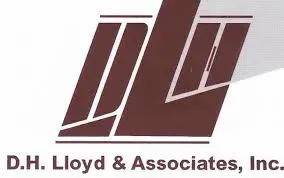Top 3 Recommended Business Policies
Index
Contact Us
Maryland’s private school sector is a significant and growing part of the state’s educational landscape, with a projected market size reaching $2.5 billion by 2025. This thriving industry, comprising over 600 establishments and employing more than 10,000 individuals, faces unique challenges when it comes to insurance coverage. From liability concerns to the impact of climate-driven risks, understanding the insurance environment for private schools in Maryland is essential for administrators, educators, and policymakers alike. This article delves into the complexities of private school insurance in Maryland, exploring recent developments, key challenges, and what the future might hold for this vital sector.
The Growing Landscape of Maryland’s Private Schools
Maryland’s private schools have seen steady growth in recent years, reflecting both increasing demand for alternative education options and the sector’s expanding economic footprint. According to IBISWorld, the industry is projected to reach a market size of $2.5 billion by 2025, with 612 establishments employing over 10,200 people. This growth underscores the importance of robust insurance frameworks to protect these institutions against operational risks.
Private schools, unlike their public counterparts, often operate with different funding models and regulatory requirements, which can affect their insurance needs. They must navigate liability insurance for staff and students, property insurance, and increasingly, coverage related to health care professionals working within their facilities. As these schools expand and diversify their offerings, insurance policies must adapt to cover a wide range of potential exposures. The rise in specialized programs, such as STEM and arts education, has also led to a greater need for tailored insurance solutions that address the unique risks associated with these educational environments.
Insurance Challenges Unique to Private Schools
One of the primary challenges facing private schools in Maryland is securing affordable and comprehensive liability insurance. This includes professional liability coverage, which protects schools against claims arising from injuries or negligence related to health care services provided on campus. A recent report by the Maryland Insurance Administration highlights ongoing concerns about the availability and affordability of such insurance, reflecting broader trends in the insurance market. The increasing litigious nature of society has prompted many insurers to tighten their underwriting criteria, making it more difficult for schools to find suitable coverage without incurring exorbitant costs.
Additionally, private schools must consider property insurance that accounts for risks such as fire, theft, and increasingly, weather-related damage. The rising frequency of extreme weather events has introduced new challenges for insurers and insured alike, complicating coverage terms and driving up premiums. Schools are now faced with the necessity of investing in risk mitigation strategies, such as enhanced building materials and emergency preparedness plans, to not only protect their physical assets but also to potentially lower their insurance costs. Moreover, as schools embrace technology and digital learning platforms, they must also address cyber liability insurance to safeguard against data breaches and cyberattacks, adding yet another layer of complexity to their insurance needs.

Climate Risks and Their Impact on Insurance Markets
Maryland’s private schools are not immune to the effects of climate change, which is reshaping the insurance landscape in profound ways. Clifford Rossi, a risk management expert, testified before Maryland lawmakers in early 2025 about how extreme weather events are overwhelming insurance companies, leading to what he described as a market failure in some sectors. This testimony, reported by the Robert H. Smith School of Business, underscores the urgency of addressing climate-driven risks.
For private schools, this means that policies covering property and casualty risks may become more expensive or harder to obtain. Flooding, hurricanes, and other natural disasters can cause significant damage to school facilities, leading insurers to reassess risk models and adjust premiums accordingly. Schools located in vulnerable areas may face particularly steep challenges, requiring proactive risk management and potentially higher outlays for insurance. The implications of these changes extend beyond mere financial strain; they also pose a threat to the educational environment, as schools may struggle to maintain safe and secure facilities for their students.
Adapting to a Changing Risk Environment
To mitigate these risks, some private schools are investing in infrastructure improvements designed to withstand extreme weather. Others are exploring alternative insurance arrangements or pooling resources with other institutions to secure more favorable terms. However, these strategies require careful planning and financial commitment, which can strain budgets already stretched thin by operational expenses. Additionally, schools are increasingly looking to adopt sustainability practices, such as green roofs and rainwater harvesting systems, which not only help in managing climate risks but also promote environmental stewardship among students. These initiatives can enhance a school's reputation and attract families who prioritize sustainability in their educational choices.
Furthermore, collaboration with local governments and community organizations is becoming essential for private schools aiming to navigate the evolving insurance landscape. By participating in regional climate resilience programs, schools can access valuable resources and expertise, allowing them to better prepare for potential climate-related disruptions. These partnerships can also foster a sense of community, as schools work alongside local stakeholders to develop comprehensive strategies that address both immediate and long-term climate challenges. Engaging in such collaborative efforts not only strengthens the school's position in the insurance market but also contributes to a broader societal response to climate change.
Health Care Professional Liability Insurance in Private Schools
Health care services within private schools have become increasingly important, especially as schools expand prekindergarten programs and provide on-site health support. However, insuring health care professionals in these settings presents distinct challenges. The Maryland Insurance Administration’s January 2025 report sheds light on the difficulties in maintaining affordable and accessible professional liability insurance for health care workers in educational environments.
These challenges are compounded by policy changes and evolving regulatory landscapes. A 2024 study by the Maryland Public Policy Institute highlights how health care policies impact private schools, particularly regarding insurance coverage gaps and cost pressures. For schools, navigating these complexities is critical to ensuring that health care professionals can operate safely and effectively without exposing the institution to undue legal or financial risk.
The Role of Policy in Shaping Insurance Access
Policy initiatives aimed at expanding health care services in schools must also consider insurance frameworks to be successful. For example, Maryland’s efforts to expand prekindergarten enrollment in private providers have faced hurdles, with none of the 24 school districts reaching the targeted 30% enrollment in private facilities as of September 2024, according to Maryland Matters. Insurance availability and cost are among the factors influencing this slow uptake.
Ensuring that private schools can obtain adequate health care professional liability insurance is thus a key component of broader educational policy goals. Without it, schools may hesitate to expand health services or participate fully in state-supported programs, limiting the benefits to students and families. Furthermore, the lack of comprehensive insurance can deter qualified health care professionals from seeking employment in private schools, exacerbating staffing shortages and impacting the quality of care provided to students. This situation creates a cycle where insufficient insurance leads to limited health services, which in turn discourages enrollment and investment in these essential programs.
Moreover, the financial implications of inadequate insurance coverage extend beyond the immediate costs of premiums. Schools may face increased liability risks, which can lead to higher operational costs and potential litigation expenses. This not only strains the school's budget but also diverts resources away from educational initiatives and student support services. As private schools strive to create safe and nurturing environments for their students, addressing the intricacies of health care professional liability insurance becomes paramount. Collaborative efforts among policymakers, educational leaders, and insurance providers are essential to develop sustainable solutions that ensure health care professionals can thrive in private school settings.
Financial Pressures and Operational Costs in Maryland Schools
Beyond insurance, private schools in Maryland must manage a complex array of operational expenses. While public schools often receive substantial federal funding, private institutions rely more heavily on tuition, donations, and other revenue streams. Between fiscal years 2019 and 2022, Maryland’s public school districts spent $21.1 billion on operational expenses excluding salaries, highlighting the scale of financial demands in the education sector as a whole, as reported by MarylandReporter.com.
Marguerite Roza, director of Georgetown University’s Edunomics Lab, notes that federal funding influxes have shifted spending patterns in Maryland’s school districts, affecting priorities such as health care, construction, and technology. While these trends primarily impact public schools, private schools often feel indirect effects through changing competitive landscapes and regulatory pressures. The landscape of education funding is evolving, and private schools must navigate these shifts carefully to remain viable and attractive to prospective families.
Balancing Insurance Costs with Educational Priorities
For private schools, balancing the rising costs of insurance with the need to invest in quality education and facilities is a constant challenge. Insurance premiums, especially for liability and property coverage, can consume a significant portion of budgets, potentially diverting funds from instructional programs or capital improvements. As these institutions strive to provide a safe and enriching environment for their students, the pressure to allocate resources effectively becomes even more pronounced. This often leads to difficult decisions regarding program offerings, extracurricular activities, and even staff hiring.
Strategic financial planning and advocacy for supportive policy measures are essential for private schools to maintain sustainability. Collaboration with insurance providers, policymakers, and educational organizations can help develop solutions tailored to the unique needs of Maryland’s private school community. Additionally, many private schools are exploring innovative fundraising strategies, such as community partnerships and alumni engagement initiatives, to bolster their financial health. By fostering a strong sense of community and support, these institutions can not only alleviate some of the financial burdens but also enhance the educational experience they offer to their students. Engaging parents, local businesses, and alumni in fundraising efforts can create a robust network of support that benefits everyone involved, reinforcing the importance of a collaborative approach in addressing the financial challenges faced by private schools.

Looking Ahead: Strategies for Enhancing Insurance Stability
As Maryland’s private schools continue to grow and evolve, ensuring stable and affordable insurance coverage will remain a top priority. Addressing climate risks, expanding health care professional liability insurance, and managing operational costs require coordinated efforts across multiple stakeholders.
Innovative approaches such as risk pooling, investment in resilient infrastructure, and engagement with state insurance regulators could help mitigate some of the challenges identified. Moreover, ongoing research and policy analysis, like those conducted by the Maryland Public Policy Institute, provide valuable insights to guide decision-making and advocacy.
In addition to these strategies, fostering partnerships between private schools and local businesses can create a supportive ecosystem that enhances insurance stability. By collaborating on initiatives such as community health programs or disaster preparedness training, schools can not only reduce their risk profiles but also strengthen their ties to the community. Such partnerships can lead to shared resources and knowledge, ultimately benefiting all parties involved.
Furthermore, the integration of technology in risk management practices can play a pivotal role in enhancing insurance stability. Utilizing data analytics to assess risk factors and predict potential liabilities allows schools to make informed decisions regarding their insurance needs. Additionally, adopting telemedicine solutions can alleviate some of the pressures on health care liability by providing students with easier access to medical consultations, thereby reducing the likelihood of on-campus incidents that could lead to claims.
Conclusion
Maryland’s private school insurance landscape is complex and dynamic, shaped by economic growth, climate change, health care policy, and financial pressures. By understanding these factors and proactively addressing emerging risks, private schools can better protect their communities and continue to provide high-quality education. Staying informed about industry trends and engaging with experts and policymakers will be crucial for navigating the evolving insurance environment in the years ahead.

